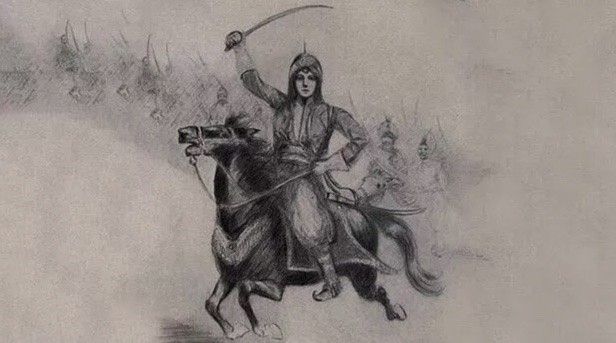Who was the Rani of Jhansi, and How did she die?
I came across this lovely lady from Indian history, and I am so intrigued — a warrior who defended her people with leadership and honor.

I came across this lovely lady from Indian history, and I am so intrigued — a warrior who defended her people with leadership and honor.
Early Life
Rani of Jhansi’s real name was Lakshmi Bai, born in 1835 in Kashi, India. Her father was an official in the Bithur Court of the Maratha Peshwa1. Growing up in the royal court, Lakshmi mastered many skills, including horsemanship, archery, and sword fighting.
At the age of eight, she married the future raja of Jhansi, Gangadhar Rao, and officially moved with him at age fourteen. Tragedy struck four years later. The Raja of Jhansi died, leaving his wife alone to rule the kingdom with no surviving heir. Five days before the raja died, he names his fifth cousin as his heir.
The Doctrine of Lapse
Since Great Britain technically ruled over the Indian subcontinent, they made the rules about who had the right to rule and the line of succession. Lord Dalhousie, the British governor of India, did not recognize the boy as the legitimate heir and promptly annexed Jhansi to complete British rule.
Her Rise to Power
An uprising against the British started to build, and Lakshmi was ready to join the fight. She refused to give up Jhansi to the British. She became regent of Jhansi over the young heir and wrote countless letters to Lord Dalhousie to explain her case. The Lord ignored her, so she finally took up arms to defend Jhansi.

Lakshmi gathered around 1400 volunteers to fight against the British. The troops started with many victories but were stopped short at the Battle of Betwa, where her troops were overwhelmed, and Britain defeated the reinforcement of rebels. Lakshmi was able to escape with a band of guards.
The Rani led one more successful battle until she and her troops confronted a British counterattack in Morar. She pushed her troops to their limits and never gave up when the outcome of the battle looked bleak. Lakshmi fought in a glorious battle dressed as a man. Unfortunately, this battle ended up taking her life.
Her Legacy
“The Ranee was remarkable for her bravery, cleverness, and perseverance; Her generosity to her subordinates was unbounded. These qualities, combined with her rank, rendered her the most dangerous of the rebel leaders.”
- Sir Hugh Rose (British officer of the force that took Jhansi)
The Jhansians cremated their queen with all the valor and honor of a military general. Sir Rose also mentions that she now lies ‘with great ceremony under a tamarind tree under the rock of Gwalior where I saw her bones and ashes.’
Lakshmi became an icon of female resistance and power, often showing up in historical textbooks, comics, and TV series. She inspired resilience and perseverance in subsequent nationalist movements.